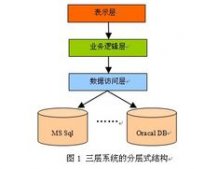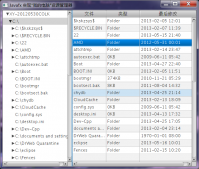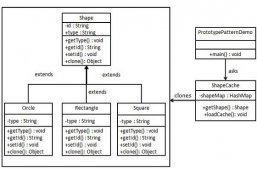这几天使用spring boot编写公司一个应用,在编写了一个filter,用于指定编码的filter,如下:
|
1
2
3
4
5
6
7
8
9
10
11
12
13
14
15
16
17
18
19
20
21
22
23
24
25
26
27
28
29
30
31
32
33
34
35
36
|
/** * Created by xiaxuan on 16/11/1. */@WebFilter(urlPatterns = "/*",filterName="CharacterEncodeFilter", initParams={ @WebInitParam(name="encoding",value="UTF-8"), @WebInitParam(name = "forceEncoding", value = "true") })@Singletonpublic class CharacterEncodingFilter implements Filter { private String encoding = "UTF-8"; private boolean forceEncoding = true; @Override public void init(FilterConfig filterConfig) throws ServletException { this.encoding = filterConfig.getInitParameter("encoding"); String force = filterConfig.getInitParameter("forceEncoding"); this.forceEncoding = (force == null) || Boolean.valueOf(force); } @Override public void doFilter(ServletRequest request, ServletResponse response, FilterChain chain) throws IOException, ServletException { if (this.forceEncoding || request.getCharacterEncoding() == null) { request.setCharacterEncoding(this.encoding); response.setCharacterEncoding(this.encoding); } chain.doFilter(request, response); } @Override public void destroy() { } public void setEncoding(String encoding) { this.encoding = encoding; } public void setForceEncoding(boolean forceEncoding) { this.forceEncoding = forceEncoding; }} |
但是在实际使用的时候,却是完全没有起作用,后来查看了一下springboot的官方文档,filter和servlet、listener之类的需要单独进行注册才能使用,但是spring boot里面提供了一个注解来替代,为@ServletComponentScan,这个注解直接加在对应的Application启动类上即可,如下:
|
1
2
3
4
5
6
7
8
|
@SpringBootApplication@ServletComponentScan@ComponentScanpublic class SpringBootWebApplication { public static void main(String[] args) { SpringApplication.run(SpringBootWebApplication.class, args); }} |
这样编写完之后,如果对应的filter是在自己当前模块下的某个package中的时候是可以起作用的,但是如果本身项目中有多个模块的时候,如果filter在一个类似与core下的package中,这样注解加上去并没有多大用处,最后会发现这个filter仍然没有起作用。
我自己编写的应用有两个,最开始的做法是把filter从core包中拆出来,然后在两个模块中各自添加一个,但是这样未免有些代码冗余,并且实现方式并不优雅,然后我查看了下@ServletComponentScan的源码,里面确实是有更好的解决方法。
@ServletComponentScan的源码如下:
|
1
2
3
4
5
6
7
8
9
10
11
12
13
14
15
16
17
18
19
20
21
22
23
24
25
26
27
28
29
30
31
32
33
34
35
36
37
38
39
40
41
42
43
44
45
46
|
/** * Enables scanning for Servlet components ({@link WebFilter filters}, {@link WebServlet * servlets}, and {@link WebListener listeners}). Scanning is only performed when using an * embedded Servlet container. * <p> * Typically, one of {@code value}, {@code basePackages}, or {@code basePackageClasses} * should be specified to control the packages to be scanned for components. In their * absence, scanning will be performed from the package of the class with the annotation. * * @author Andy Wilkinson * @since 1.3.0 * @see WebServlet * @see WebFilter * @see WebListener */@Target(ElementType.TYPE)@Retention(RetentionPolicy.RUNTIME)@Documented@Import(ServletComponentScanRegistrar.class)public @interface ServletComponentScan { /** * Alias for the {@link #basePackages()} attribute. Allows for more concise annotation * declarations e.g.: {@code @ServletComponentScan("org.my.pkg")} instead of * {@code @ServletComponentScan(basePackages="org.my.pkg")}. * @return the base packages to scan */ @AliasFor("basePackages") String[] value() default {}; /** * Base packages to scan for annotated servlet components. {@link #value()} is an * alias for (and mutually exclusive with) this attribute. * <p> * Use {@link #basePackageClasses()} for a type-safe alternative to String-based * package names. * @return the base packages to scan */ @AliasFor("value") String[] basePackages() default {}; /** * Type-safe alternative to {@link #basePackages()} for specifying the packages to * scan for annotated servlet components. The package of each class specified will be * scanned. * @return classes from the base packages to scan */ Class<?>[] basePackageClasses() default {};} |
这里有一个value()属性,上面的注解默认为basePackage,那么在扫描的时候就只扫描当前模块下面的包,其他不扫描,如果要连同其他模块一起扫描的话,给这个属性加上值即可,如下:
|
1
|
@ServletComponentScan(value = "cn.com") |
如上,自定义的filter和servlet就可以正常起作用。
总结
以上就是本文关于springboot扫描自定义的servlet和filter代码详解的全部内容,希望对大家有所帮助。有什么问题可以随时留言,小编会及时回复大家。同时希望朋友们对服务器之家网站多多支持!
原文链接:http://blog.csdn.net/u012734441/article/details/53389351















